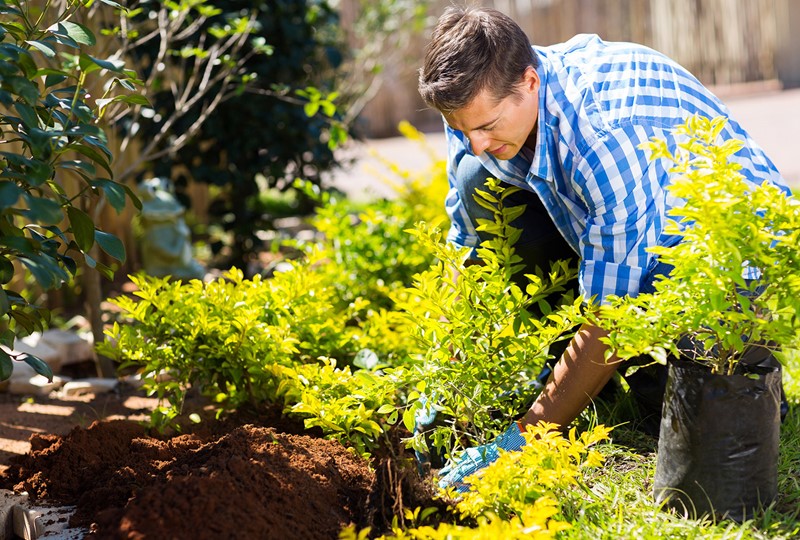
Key insights
- Homeowners who are hoping to dive into landscaping should build a foundation with larger, low-maintenance shrubs.
- Beginner gardeners should consider the yard’s exposure to sun as they add in smaller plants and flowers.
- Consider getting free divided plants from friends with surpluses, and keep an eye out for mid-summer sales at garden centers.
Not everyone has a natural green thumb, but nearly every homeowner wishes their landscaping looked like something out of a magazine. Fortunately, it’s not hard to create curb appeal with small changes. Here are easy ways you can add beauty and function to your yard this year.
What are the best plants for true beginners?
To answer this question, we consulted Edina Realty's former IT manager, Patti Lauer, who is a certified University of Minnesota Extension Master Gardener Volunteer.
For true beginners, Lauer recommends starting with shrubs for foundation plantings. These will help you fill in the larger spaces and you can then add flowering plants or other smaller plants for more texture and color.
Easy shrubs for planting include:
- Dwarf Bush Honeysuckle
- Black Chokeberry
- Spirea
- Bush Cinquefoil
- Fragrant sumac
- Juniper
- Currants
- Hydrangeas
Choosing perennials for sun or partial sun
For beginner gardeners, perennial plants are the gift that keeps giving. Unlike annuals, which need to be planted each year, perennials come back year after year. Below are some common perennials that flourish in different amounts of sun and shade.
|
Full-sun flowers and plants for beginners |
Partial-sun flowers and plants for beginners |
|
|
How will I know when to water the plants?
After planting, the biggest question among beginner gardeners and landscapers is how often to water. Lauer recommends checking your plants in the morning before they've seen the day's full sun. Begin by feeling the top few inches of soil for in-ground plants and the top two inches for potted plants. If the soil is dry, it's time to water.
Be sure the soil can drain properly and avoid watering until it has returned to normal. Not sure what "normal" is? Check out this guide on how to test and amend your soil to ensure your plants can thrive this summer.
And finally, be sure to water at the base of the plants and try to minimize how often you water the foliage itself. Adding mulch around the plants also helps cut down on watering and weeding requirements.
How can I reduce costs when adding better landscaping or a beginner garden?
It's possible to build a great yard without spending hundreds of dollars.
If you have the space, consider composting to save money on soil amendments. A natural compost can be used as mulch and top dressing each spring.
End-of-season sales tend to start in June at local gardening stores. By waiting until then, you may be able to score some great deals on perennials that will come back next year!
Real gardening pros know that the secret to low-cost options is relying on friends and neighbors with a bumper crop! If you know someone who loves to garden, ask if they have any plants they're dividing and can't replant in their own yard. Some easy-to-grow plants, like hostas and daylilies, grow notoriously fast and neighbors or friends may be happy to give them away for free to an eager beginner. (Once you grow plants that need to be divided and replanted, be sure to return the favor!)
How can I save time on mowing my lawn?
If you have a large lawn that requires frequent mowing, consider filling in some areas with rock, woodchips, mulch and native plants.
Plus, keep in mind that there's no harm in letting your grass grow out just a bit before mowing.
"Let your lawn grow a little taller and mow no more than 1/3 height at a time, keeping it around three inches. This will strengthen the grass and shade and crowd out the weeds," says Lauer. "Plus, if you leave your grass clippings on the ground, it will reduce your fertilizer requirements and increase the water infiltration in your lawn's soil."
Selling? Keep these tips in mind
Selling a house means making your home appealing to the largest group of buyers. That means as you fix up your lawn this summer, you may want to consult with your REALTOR® or a landscaping expert to ensure that your yard is in peak condition before listing your home on the market.
Landscaping is only one component of building up curb appeal. Consult this curb appeal checklist to see the myriad ways you can help your home shine online and in person for potential buyers. Need help? Reach out to Edina Realty or your agent today!









 ©2025 Prosperity Home Mortgage LLC®. (877) 275-1762. 3060 Williams Drive, Suite 600, Fairfax, VA 22031. All first mortgage products are provided by Prosperity Home Mortgage, LLC®. Not all mortgage products may be available in all areas. Not all borrowers will qualify. NMLS ID #75164 (For licensing information go to: NMLS Consumer Access at
©2025 Prosperity Home Mortgage LLC®. (877) 275-1762. 3060 Williams Drive, Suite 600, Fairfax, VA 22031. All first mortgage products are provided by Prosperity Home Mortgage, LLC®. Not all mortgage products may be available in all areas. Not all borrowers will qualify. NMLS ID #75164 (For licensing information go to: NMLS Consumer Access at